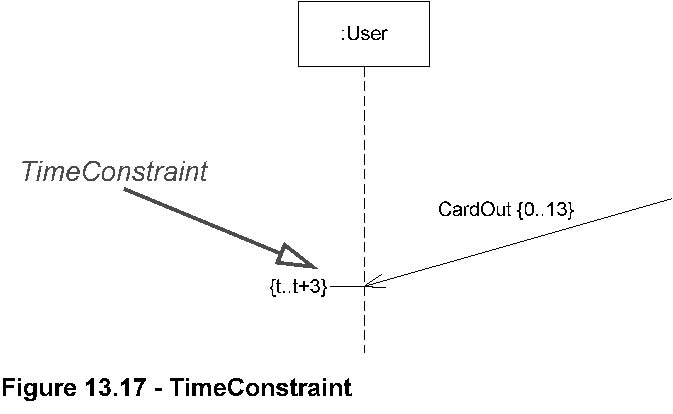*Generalizations
•
IntervalConstraint (from SimpleTime ) on page 462
Description
A TimeConstraint defines a Constraint that refers to a TimeInterval .
Attributes
Issue 8894 - add ‘firstEvent’ entry
• firstEvent:Boolean [0..1] The value of firstEvent is related to constrainedElement. If firstEvent is true, then the corresponding
observation event is the first time instant the execution enters
constrainedElement. If firstEvent is false, then the corresponding observation event is the last time instant the execution
is within constrainedElement.
Associations
Issue 8894 -add ‘specification’ entry
• specification: TimeExpression [1] A time expression used to determine whether the constraint is satisfied. Redefines
IntervalConstraint ::specification
Constraints
No additional constraints
Semantics
The semantics of a TimeConstraint is inherited from Constraints. All traces where the constraints are violated are negative
traces (i.e., if they occur in practice, the system has failed).
Notation
Issue 8349 -replace ‘EventOccurrence’ by ‘OccurrenceSpecification’
A TimeConstraint is shown as graphical association between a TimeInterval and the construct that it constrains. Typically
this graphical association is a small line (e.g., between an OccurrenceSpecification and a TimeInterval ).
Examples
See example in
Figure 13.17 where the TimeConstraint is associated with the reception of a Message.

Changes from previous UML
This metaclass has been added.